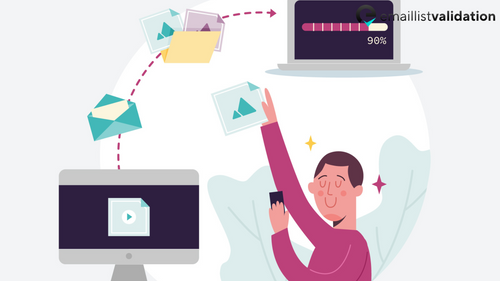Any email marketing strategy must consider email deliverability. It refers to an email's capacity to reach a recipient's inbox without being marked as spam or bounced back. Bad email deliverability can harm a company's reputation by lowering open and click-through rates and, as a result, reducing the effectiveness of email marketing.
This article will show you the best email deliverability practices that you should consider following to maintain and improve the chances of your emails reaching your subscribers' inboxes.
Understand Email Deliverability

What does email deliverability mean?
Email deliverability refers to the email's ability to reach the recipient's inbox without being blocked or labeled as spam. Email deliverability is crucial for businesses and individuals that use email as their major modes of communication, such as marketing campaigns, newsletters, customer service, and personal communications.
Factors that affect email deliverability
Factors that affect email deliverability include:
Factor 1: Spam filters
Spam filters are designed to detect and block emails that are considered spam. They employ a number of variables to assess if an email is a spam, including the sender's reputation, the email content, and the layout of the email.
Factor 2: Authentication
The process of validating that an email is coming from a legitimate sender is known as authentication. SPF (Sender Policy Framework), DKIM (DomainKeys Identified Mail), and DMARC are all email authentication technologies (Domain-based Message Authentication, Reporting, and Conformance).
Factor 3: Content
The content of an email may also have an impact on its deliverability. Emails containing specific terms, phrases, or links may be flagged as spam by spam filters, causing the email to be blocked or sent to the recipient's spam folder.
Factor 4: Reputation
The reputation of the sender's email address and domain is also important for email deliverability. If the sender's email address or domain has a history of sending spam or engaging in other spammy practices, email deliverability may suffer.
Factor 5: Bounce rate
The percentage of emails returned to the sender as undeliverable is referred to as the bounce rate. High bounce rates might harm email deliverability since they suggest that the sender is using old or incorrect email lists.
Factor 6: Engagement
Email deliverability can also be affected by engagement metrics such as open rates, click-through rates, and reply rates. Emails that are opened, clicked, or replied to are viewed as more valuable by email providers, which can lead to higher deliverability rates in the future.
Best Email Deliverability Practices

Build a High-Quality Email List
- Obtain permission-based email addresses: Email addresses can be collected via opt-in forms on your website or landing pages, social media campaigns, events, and promotions.
- Importance of list hygiene and pruning: Clean your email list on a regular basis by deleting inactive subscribers, bounced email addresses, and spam traps. This ensures that your list is composed of engaged and interested receivers who are more likely to respond to your emails.
Craft Relevant and Engaging Content
- Tips for creating effective subject lines and email content: To encourage recipients to open and interact with your emails, use individualized subject lines, clear and short wording, and a call-to-action.
- Strategies for personalization and segmentation: Personalize your emails using subscriber data and divide your email list to send targeted messages.
Pay Attention to Email Design
- Elements of a well-designed email: Make your email easy to read and navigate by using a clean and basic style, including photos and visuals to break up the text.
- How to optimize for different devices and email clients: Check that your email is optimized for multiple screen sizes, and test it on various email clients to ensure that it looks well on all devices.
Test and Monitor Your Emails
- Importance of testing emails before sending: Test your emails on different email clients and devices to ensure they look and perform properly.
- Metrics to monitor: Track important indicators to determine the success of your email marketing and utilize the information to better future campaigns.
Avoid Email Deliverability Pitfalls

Email marketing is a vital tool for organizations to use in communicating with their clients and prospects. But, if not done appropriately, it might ruin your reputation and harm email delivery. These are some common email deliverability mistakes and how to avoid them:
- Deceptive Subject Lines: Using a subject line that is misleading or does not adequately convey the email's content might result in high spam complaints and low engagement rates. To avoid this, make sure your subject line is precise, simple, and appropriately portrays your email's content.
- Sending too frequently: Bombarding your subscribers with too many emails can lead to high unsubscribe rates and low engagement. Decide and keep to a frequency that works best for your audience.
- Poor Content: Creating content that is irrelevant or boring to your subscribers can result in low engagement rates and a high number of spam complaints. Make sure your material is relevant to your target audience and adds value to their lives.
- Ignoring unsubscribes: Ignoring unsubscribe requests might result in significant spam complaints and harm your sender reputation. Make sure you have a clear and simple unsubscribe method in place, and that you honor any unsubscribe requests as soon as possible.
- Purchased lists: Purchasing email lists may be tempting, but it might hurt your reputation as a sender and result in a large number of spam complaints. Instead, concentrate on organically growing your email list by offering signup incentives and ensuring that your subscribers have explicitly opted-in to receive emails from you.
Conclusion
Finally, guaranteeing email deliverability is critical for businesses and individuals who rely on email to communicate with their target audience or clients. Maintaining a good reputation and avoiding being labeled as spam requires consistency and monitoring email performance. You can enhance and develop your email deliverability by applying the practices cited in the article and adding them to your email marketing plan.



